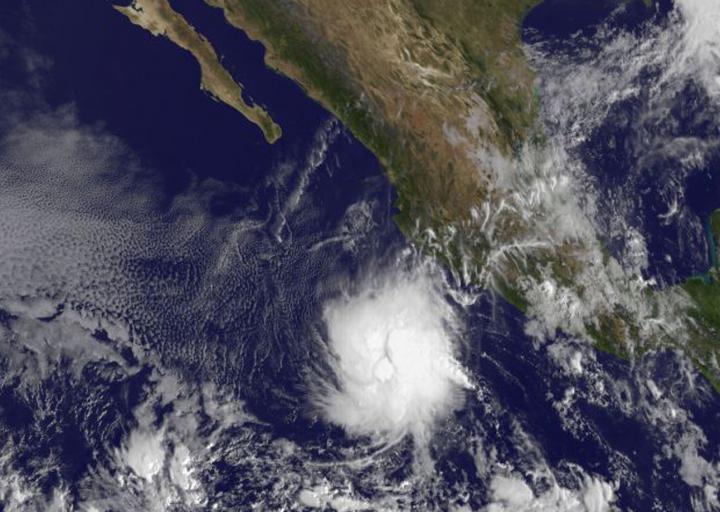Tropical Storm Rick joins an elite late-season storm group

On Nov. 19 at 1500 UTC (10:00 a.m. EST) the NOAA's GOES-West satellite saw Tropical Storm Rick southwest of the western Mexican coast. Credits: NASA/NOAA GOES Project
On Nov. 19 Rick joined an elite group of tropical cyclones. The National Hurricane Center noted that only three tropical storms have formed later than this calendar date in the eastern North Pacific since reliable records began in the early 1970s.
On Nov. 19 at 1500 UTC (10:00 a.m. EST), the NOAA's GOES-West satellite saw the Tropical Storm southwest of the western Mexican coast.
National Hurricane Center forecaster Kimberlain said “First-light (GOES-West) visible imagery indicates that the low-level center is underneath a circular mass of deep convection, and there has been an increase in banding features and their associated curvature.
The increase in organization could be a sign of some decrease of the southeasterly shear that has been affecting the cyclone.”
At the time of the GOES-West image, the center of Tropical Storm Rick was located near latitude 14.7 North, longitude 105.8 West. That puts the center about 315 miles (505 km) south-southwest of Manzanillo Mexico. There are no coastal watches or warnings in effect.
Rick was moving toward the north near 7 mph (11 kph) and the National Hurricane Center expects Rick to turn toward the northwest then west-northwest by Friday, Nov. 20.
The estimated minimum central pressure is 1002 millibars.Maximum sustained winds have increased to near 40 mph (65 kph) with higher gusts. Some strengthening is forecast during the next day or two.
For updated forecasts, visit: http://www.
Media Contact
All latest news from the category: Earth Sciences
Earth Sciences (also referred to as Geosciences), which deals with basic issues surrounding our planet, plays a vital role in the area of energy and raw materials supply.
Earth Sciences comprises subjects such as geology, geography, geological informatics, paleontology, mineralogy, petrography, crystallography, geophysics, geodesy, glaciology, cartography, photogrammetry, meteorology and seismology, early-warning systems, earthquake research and polar research.
Newest articles

Webb captures top of iconic horsehead nebula in unprecedented detail
NASA’s James Webb Space Telescope has captured the sharpest infrared images to date of a zoomed-in portion of one of the most distinctive objects in our skies, the Horsehead Nebula….

Cost-effective, high-capacity, and cyclable lithium-ion battery cathodes
Charge-recharge cycling of lithium-superrich iron oxide, a cost-effective and high-capacity cathode for new-generation lithium-ion batteries, can be greatly improved by doping with readily available mineral elements. The energy capacity and…

Novel genetic plant regeneration approach
…without the application of phytohormones. Researchers develop a novel plant regeneration approach by modulating the expression of genes that control plant cell differentiation. For ages now, plants have been the…





















